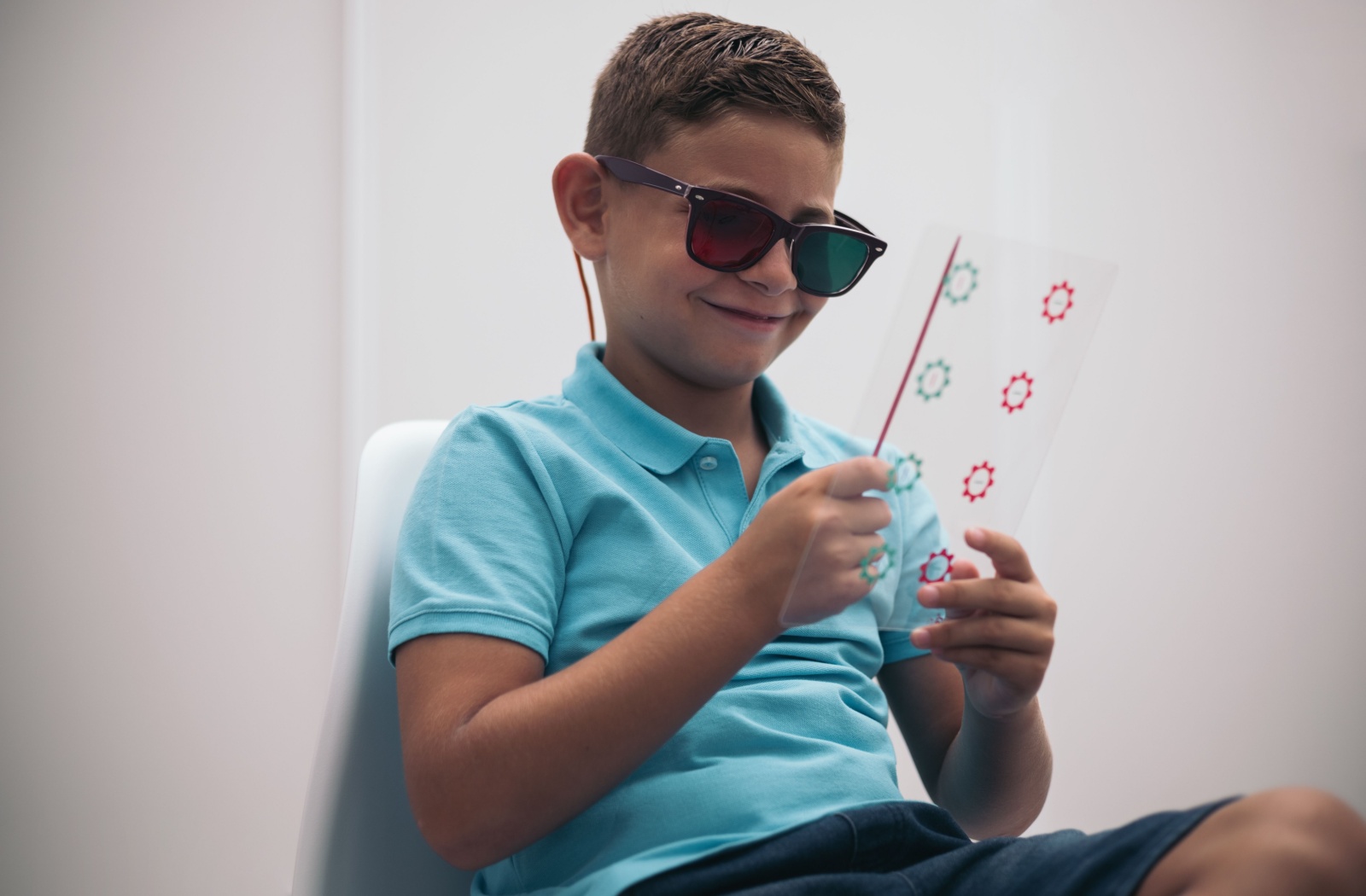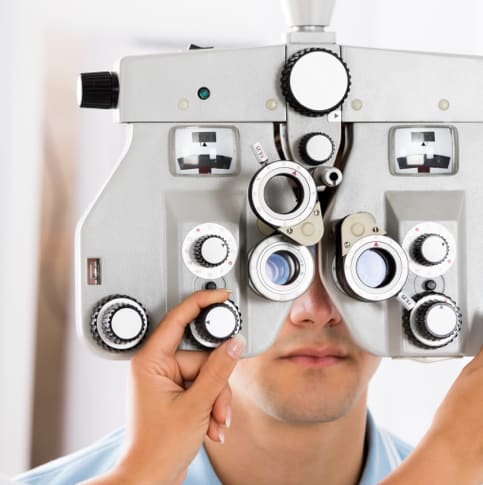Reading is a fundamental skill that is crucial to a child’s academic and personal development. However, for some children, underlying vision problems make reading an uphill battle. Vision therapy offers a solution to some reading difficulties by helping children improve their reading skills with targeted exercises and activities.
There isn’t a one-size-fits-all answer for how vision therapy can benefit your child. The first step is a comprehensive eye examination to determine the root of your child’s vision problems and offer tailored advice for potentially beneficial therapies.
The Link Between Vision & Learning
Vision plays a critical role in the learning process, particularly regarding reading. Children with untreated vision problems may struggle to keep up with their peers, leading to academic setbacks and diminished confidence. Such vision-related issues can manifest in various ways, such as difficulty tracking words on a page, skipping lines while reading, or experiencing frequent headaches and eye strain.
Research indicates that up to 80% of learning is visual, underscoring the importance of good vision for academic success. Children facing vision challenges may exhibit behaviours mistakenly attributed to attention deficits or learning disabilities. Without proper diagnosis and intervention, these children may continue to struggle unnecessarily—impacting their education and overall well-being.
Signs of Vision Problems in Children
Identifying vision problems early is crucial for effective intervention. Parents and educators should be aware of common signs indicating that a child is experiencing vision difficulties that impact their reading skills. Some of these signs include:
- Frequent squinting or blinking
- Complaints of double vision or blurred vision
- Holding reading materials very close to the face
- Losing their place or skipping lines while reading
- Covering one eye or tilting the head to see better
- Experiencing headaches or eye strain after reading
If a child exhibits any of these symptoms, it’s important to seek a comprehensive eye examination from an optometrist specializing in pediatric vision care. Early detection and treatment can prevent vision problems from hindering a child’s academic progress.
Understanding Vision Therapy
Vision therapy is a specialized program for improving visual skills and processing abilities. Unlike traditional eye care, which focuses on correcting refractive errors with glasses or contact lenses, vision therapy addresses the underlying issues affecting how the eyes work together and process visual information.
This type of therapy involves a series of exercises and activities tailored to each child’s specific needs that aim to enhance their visual function and overall reading performance.
Vision therapy has been shown to improve reading skills in children by addressing issues like poor eye coordination, focusing problems, and perceptual difficulties. By understanding and utilizing vision therapy, parents can help their children achieve better academic outcomes and reduce the frustration associated with reading challenges.

Understanding the Role of Vision Therapy
Vision therapy employs various techniques and exercises to address specific vision problems. These activities can improve eye coordination, focusing ability, and visual processing skills. Some common methods used in vision therapy include:
- Eye tracking exercises: These exercises help improve the ability to follow moving objects smoothly and accurately, which is essential for reading.
- Focusing activities: Activities that enhance the ability to maintain clear vision at different distances, reducing eye strain during prolonged reading sessions.
- Binocular vision training: Exercises that strengthen the coordination between both eyes, ensuring they work together effectively for better depth perception and visual clarity.
Through consistent practice and guidance from a vision therapist, children can develop stronger visual skills, which can directly translate to improved reading performance.
Getting Started with Vision Therapy
Getting started with vision therapy involves several steps.
First, parents should schedule a comprehensive eye examination with an optometrist specializing in vision development and therapy. This evaluation can help identify any underlying vision problems affecting your child’s reading skills.
Once a diagnosis is made, the optometrist can develop a customized vision therapy plan tailored to the child’s specific needs.
Therapy sessions typically occur once or twice a week and may include both in-office and at-home exercises. Your child’s eye doctor can provide the exact schedule for their therapy plan. Consistency and commitment to the therapy program are crucial to achieving the best results.
Discuss Vision Therapy Options with Your Child’s Optometrist
Vision therapy can offer a valuable solution for many children struggling with reading difficulties due to vision problems. Vision therapy can significantly enhance a child’s reading skills and overall academic performance by addressing these issues through targeted exercises and activities.
Parents and educators should remain vigilant for signs of vision problems and seek professional guidance if they suspect a child may need vision therapy. Call our team at Oxford Optometry to book an appointment if you suspect your child has vision problems. One of our experienced eye doctors can examine your child’s eyes and determine whether they can benefit from vision therapy.


















